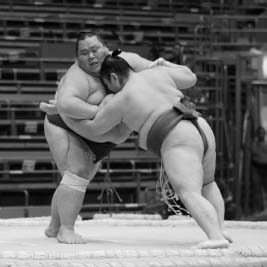ShintoCustoms and Rituals |
Are dance and drama equally important? |
Bugaku, “refined dance” in 160 different styles, is often performed to the accompaniment of a gagaku ensemble and sometimes occurs in Buddhist temples as well as Shinto shrines. It is somewhat more formal and classical than Kagura, a uniquely Shinto form of liturgical dance with musical accompaniment. The name apparently derives from a term that means “temporary abode of the kami,” a place on Earth to which worshippers summon the deities. Kagura has its mythic roots in the dance of the Terrible Female of Heaven that lured the sun goddess to emerge from her cave. Unlike the more staid classical version danced for the emperor on December’s full moon night, the shrine (or village) kagura now reenacts often raucous scenes from mythological narratives. Several of the great shrines—such as those of Izumo, Kasuga, and Ise—are especially known for their longstanding traditions of kagura performance. Some shrines have structures dedicated to kagura, but many still stage the dance in the large open space in front of the worship hall. Bon odori is a popular form of folk dancing performed at festivals on shrine grounds. Celebrants dance around a large, raised, scaffoldlike platform on which drummers and other musicians perch to play their popular hayashi-style music. Perhaps the best known of Shinto-related dances is the Dragon dance often associated with festival parades. In shrine dances, the dragon begins by bowing to the kami and the chief priest before writhing its way across the sacred precincts. The ancient Japanese theater form called No also has roots in the reenactment of Shinto myths.

Though not a religious ritual in itself, Sumo wrestling is associated with many Shinto traditions.
